Disabled Spotmatic and Mystery Film
A few years ago I was given a black Pentax Spotmatic. I have three or four other Spotmatics – for years that was all I shot in the field and always had one for colour, one black and white and one spare. The first cameras I ever bought were Spotmatics. But all were silver and I had never even seen a black one so was glad to have it.
A recent post by Jim Grey about a Spotmatic F inspired me to get the black Spotmatic going. I had noticed that the battery cover was green around the edges from a leaking battery and the cover would not come off. There was a roll of film in the camera, with 10 frames already shot, which I wanted to finish. I was not sure if the bottom plate of the camera was essential to light tightness and could not try to repair the camera and make the light meter operational with film in it. Thus I had set the camera aside to work on some time.
Thanks to 30 months of being set aside and spurred by Jim’s article I decided to shoot the roll with the Sunny 16 rule and then try to fix the camera. To shoot it though required assumptions based on a few things I knew about the previous ownership. I was pretty sure the film had been in the camera since the 90s when digital really started to replace film. The Spotmatic has a dial on top for Color, Pancro and Empty, a note-keeping device, not otherwise functional. The camera was set to Pancro and ASA 200 so I guessed that it was most likely ISO 200 black and white film, probably 36 exposures, and nearly 20 years old. The lens on this body was a very nice 28mm/f3.5 but since it could not be adapted to my Canon 5Dii, I had given it away a year or two ago to a family member with a Canon T4i (the 5Dii has a large mirror that strikes the back of the wider Takumar m42 mount lenses).
I decided to expose it for ISO 100 to compensate for age, and because the mental math for Sunny 16 is easier :). And I mounted a Super Takumar 50/1.4 on it. The rear elements of this lens are heavily yellowed by radiation from the thorium in the glass. Yellowed to something that looks like a bit less than a 1 EV reduction in brightness. I figured if black and white film then a yellow filter in the glass was going to be good.
I shot the film on a day that varied from heavily overcast to not quite bright sun. I took some guidance from a not very accurate light meter in my phone, but mostly just guessed the exposures, figuring on some latitude in the black and white film. When I opened the camera it was pretty surprising to discover it was a roll of 24 exposure Fuji Superia XTRA 400. I am not sure when this film first came into production, but I have seen mention of people shooting expired film of this make from 2002, suggesting a manufacturing date in the late 1990’s or so. I have shot a lot of this film that expired in 2007, and all of it was in good condition – I did not even do exposure compensation for it as it was pretty much dead on with new film. This raised my expectations.
However, when I got the film back from processing, I was surprised again, this time to see that it was in pretty bad condition. Very grainy and if the exposures were in anything but the brightest sun, then they were pretty unattractive exposures. That is not to mention the yellow cast from the lens. The shutter speeds look good, so I have to blame the film and lens all the way. I guess the film was really old, perhaps as old as the film stock is, and almost certain was stored poorly, perhaps the camera was in the sun for a while.
The first 10 frames were blank; it appears the camera was loaded and stored that way, then someone later advanced the shutter a few times to see if things were working, with the lens cap on. Next time that I encounter a situation like this, the best procedure would be to wind the film back, take it out of the camera, fix the camera and then shoot the film after advancing it with lens cap on back to where it was when I started. But, had I done that, I probably would have shot the film at 200, or maybe even 400, and the images would have really suffered, and not been recoverable at all, so perhaps this was the best way thanks to blind luck.
The base plate of a Spotmatic of this vintage has no wires connecting it to the camera, so it will just come off (4 screws hold it on) and can then be worked on more easily. The battery compartment is a self contained unit with a contact on the bottom which presses on another contact inside the camera. I soaked the baseplate in a vinegar solution, which got rid of the green but did not loosen the battery cover. I then soaked it in WD40 for a couple of days, with no loosening effect. It is back in vinegar again, but I hold out little hope that will work. Next I will try heating it, but this has to be done carefully to preserve the black finish. I am hoping I can get the light meter working again, but if not then it could join my collection of Sunny 16/external light meter cameras. My fall back will be to get another baseplate, though finding a black one won’t be easy.
As to the lens, I need to get a bright light, like an LED and shine it through the lens for at least a few days and the yellow should clear up just fine. I long believed one needed UV light to reset these lenses, and the simplest fix was to leave them on a windowsill in the sun for a few weeks (with protection from the magnifying glass effect burning up your windowsill, and house). But this turns out not to be true – a strong light is all that is needed, and LEDs are cool and energy-efficient so are better suited to the task. I will keep my eyes open for the right kind of light and get on with this in the near future as it is a great lens when clear.
In the meantime I worked on the photos – they needed the white balance de-yellowed and lots of contrast added but came out on the useable side of the equation. I really like the camera, its been a while since I used one of the Spotmatics and it felt so good in my hands. I have shot hundreds of rolls through Spotmatics and their close cousin the K1000 so the handling is pretty much hardwired. I don’t have photos of the camera with its plate off, or any of that side of things, so I’ll just show you some of the photos including some before and after processing versions.
Click/tap on any image below to open the gallery and see a larger example.
Swipe of click the arrows to navigate forwards and back in the gallery.
- As scanned
- The best I could manage
- after processing
- after processing
- As scanned
- after processing
- As scanned
- after processing
- As scanned
- after processing
- As scanned
- after processing
- after processing



















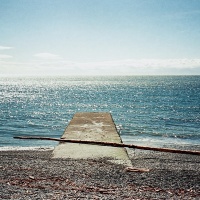

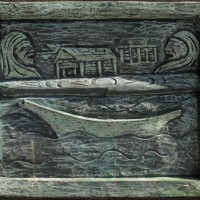

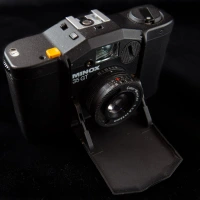
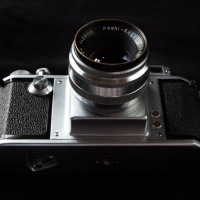


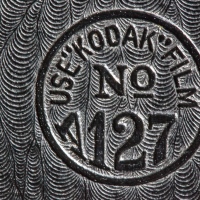


Interesting…I wonder what you had in mind when you shot, thinking the photos would be black and white. But they’re OK after fixing the white balance and contrast – the first two are very nice. I have that lens too, but mine’s not quite that yellowed (so far I’ve chosen not to “fix” that flaw). I find it’s very hard to see when it’s in focus – my eyes just can’t see well enough in the viewfinder. I like the lens and when it works, it’s great, but otherwise it’s so frustrating. You didn’t seem to have trouble focusing it, but maybe it helps to have it on a camera it’s meant to work with (I had to get an adapter) ! 😉
LikeLiked by 1 person
Hi Lynn, I wasn’t thinking too much about making excellent black and white – I did have doubts about whether the film and camera would behave themselves, so it was as much as anything about testing the camera and hoping for the best. And getting the best was about finding light that would translate into black and white. But most of the time I was shooting the light wasn’t spectacular. But, I should probably convert some since b&w was on my mind.
The Takumar 50/1.4 and 55/1.8 are excellent lenses. One of the great things about adapting these lenses is that with the right chipped adapter you can get focus confirm to work in the camera. Or at least on the cameras I use. It would be worth checking that out for your camera because it makes a huge difference to using the lens if you have eyesight/glasses like mine. And it is worth getting these lenses working as they are really very good. With my digital camera I find that I have to calibrate the adapter because sometimes they focus a touch too near or too far. Calibration is a simple thing, but a bit of a pain.
LikeLike
Your Photoshop skills are strong; you can’t tell there was ever any yellowing of those images.
My experience with Superia Xtra 400 is that it’s a resilient film, both in exposure latitude and in being good after expiring. So yeah, yours must have had some really rough storage.
I did not know that the cure for a yellowed lens was light. Glad to know that! I have a couple Super-Takumars and if/when they yellow now I can fix it. I guess the SMC Takumars I have for my Spotmatic F don’t contain thorium and thus won’t yellow.
LikeLike
Hi Jim, thanks for the comment. I actually have no “Photoshop” skills, it is not software that I know how to use. But probably you intended editing skills 🙂 I use Lightroom, it does nearly everything I ever need.
I can still see the yellow tinge, but if I made it any bluer it didn’t seem right. What I like about where it has landed is that it is very similar to the look of Rollei CR200 slide film, which has a bit much yellow for most people. And is grainy like this too.
I don’t know the details of which models turn yellow, but it is only some lenses, and it is only from a few years too. I have heard there are other makes of that same vintage that yellow as well – I think some of the Zuiko lenses but have not researched it.
I agree about the resilience of the Fuji consumer grade films – I have had very good luck with long expired Fuji. And that is especially compared with the lower end Kodak colour films which are barely worth using a few years beyond expiry.
LikeLike
I was using Photoshop in the generic sense! 🙂 The consumer-grade Fuji color negative films have long been my go-to for everyday shooting.
LikeLiked by 1 person
A very interesting read!
LikeLiked by 1 person
Thank you Peter! Looks like I will have to move on to heat – vinegar is not doing the trick, though quite a bit more corrosion products have appeared around the cover, so I am going to leave it for a while. No need to be in a rush.
LikeLike
yes exactly… it took it while for it to get stuck so it takes a while to get unstuck again 🙂
LikeLike
In the end I tried drilling two holes and making a wrench to turn it. No luck on that. So I put it into the vice and used a large screw driver. Because of the holes the screw driver broke through the slot and then I could get serious purchase which broke the cap and I pulled it out in pieces. The battery dented but not breached so kept its mercury contained. No damage to the threads so all I needed was a new cap. And the light meter works as it should. So the camera is fully functional. I took a cap from an SP1000 and discovered it too had film in though the meter is wonky so I moved that roll over to the black SP and its half done waiting my return from fieldwork.
LikeLike
😉 i’m looking forward to it!
LikeLiked by 1 person
Too bad the first 10 frames were blank, you might have been able to trace the original owner
LikeLiked by 1 person
Hi Eliza, thanks for coming by and commenting. I actually do know the history of this camera (one of very few that I have that I do know). It came from an institution where I think it was used by quite a few people. But I was hoping for something interesting in those 10 frames.
LikeLike